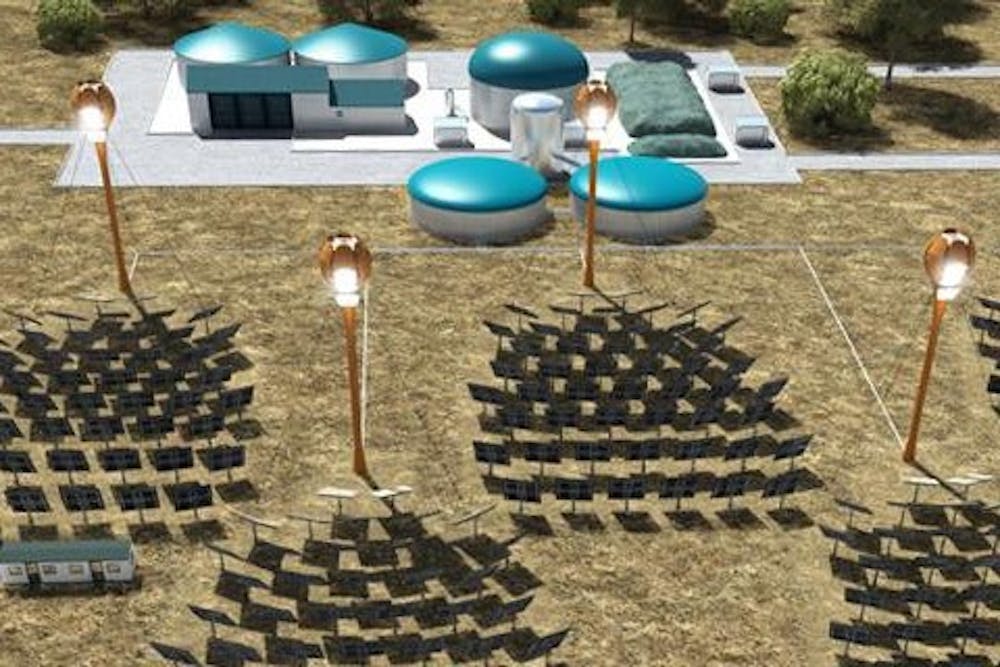Just two years after inking a deal with Spanish solar energy company AORA, ASU's Solar Tulip project has been cancelled.
The news comes from deputy director of ASU's LightWorks innovation accelerator, Ellen Stechel.
The tulip would have been a 24-hour sustainable energy plant, using sunlight during the day and natural gas during the night, she said. The facility gets its name from the bright yellow collection tower that would have stood amid a sea of mirrors.
The mirrors would have aimed the sun's energy into the top of the tower, heating up the air enough to drive a turbine, Stechel said. At night, natural gas would have been used to continue creating this heat.
The project was one of the first to pass through LightWorks, which seeks to provide sustainable innovations and ideas with seed funding and economic analysis.
The project's cancellation does not spell the end of the technology, however, as AORA currently has active sites in both Israel and Spain, with plans for one in Ethiopia.
While not all the reasons for the project's cancellation are clear, some stand out.
"Our plant is designed to European standards," AORA CEO Zev Rosenzweig said in an interview with alternative energy publication Clean Technica. "We had a hard time finding a vendor in the US who could build the steel tower to metric dimensions."
At that time, the plant had merely been delayed by a few months, but the managers of the project were still hopeful to complete it.
"ASU has an additional requirement where they need to have a registered engineer witness the steel being made and watch it being rolled," he told Clean Technica.
Arizona's requirement that land be inspected to ensure it does not infringe on Native American remains or historical sites also hindered the project, Rosenzweig said in the interview.
"Companies have to look at their priorities," Bill Brandt, director of strategic integration at LightWorks, said. "In this case, (AORA) decided that they had other funding priorities."
The Arizona solar tulip's cancellation does not mean that the project was a failure.
"We think that they got some good value out of the technology that we helped them with," Brandt said.
AORA wanted the power plant for the research — in this sense, the project succeeded, Gerald DeRosa, director of energy innovations at the University's Facilities Development and Management Department, said. AORA conducted two years of research with ASU.
While the future of the solar tulip is unclear, the future of solar power in general is more certain.
According to Bloomberg, the price per watt of solar energy has plummeted from $76 to $0.30 in 38 years. Similarly, energy produced by photovoltaic solar cells has gone from 40,336 megawatts in 2010 to approximately 233,000 megawatts in 2015.
"(AORA) may be back," Brandt said.
Reach the reporter at sdeadric@asu.edu or follow @deadrick_sam on Twitter.
Like The State Press on Facebook and follow @statepress on Twitter.




